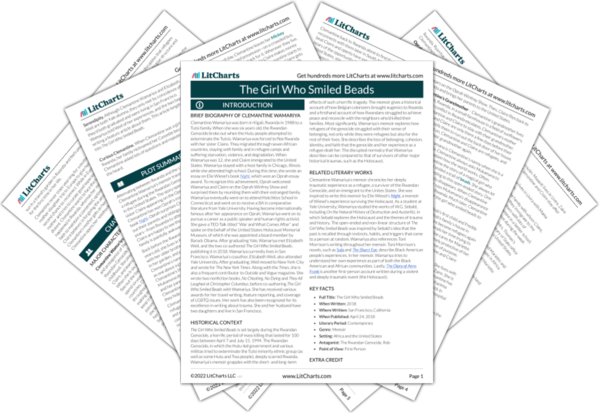Previous
Chapter 11
|
Previous
Chapter 11
|
The Girl Who Smiled Beads: Chapter 12 Summary & Analysis |
Next
Chapter 13
|


Upgrade to unlock the analysis and theme tracking for all of The Girl Who Smiled BeadsThe Girl Who Smiled Beads!
Get LitCharts A+